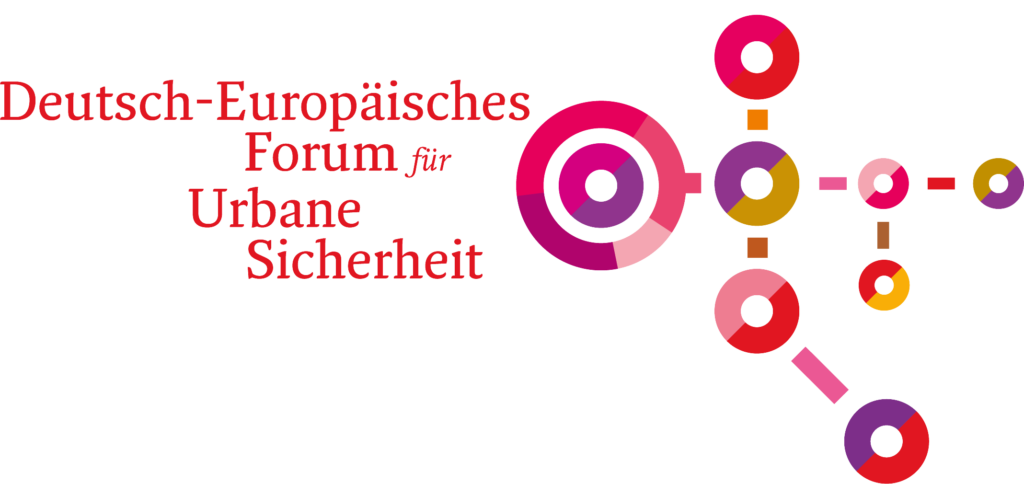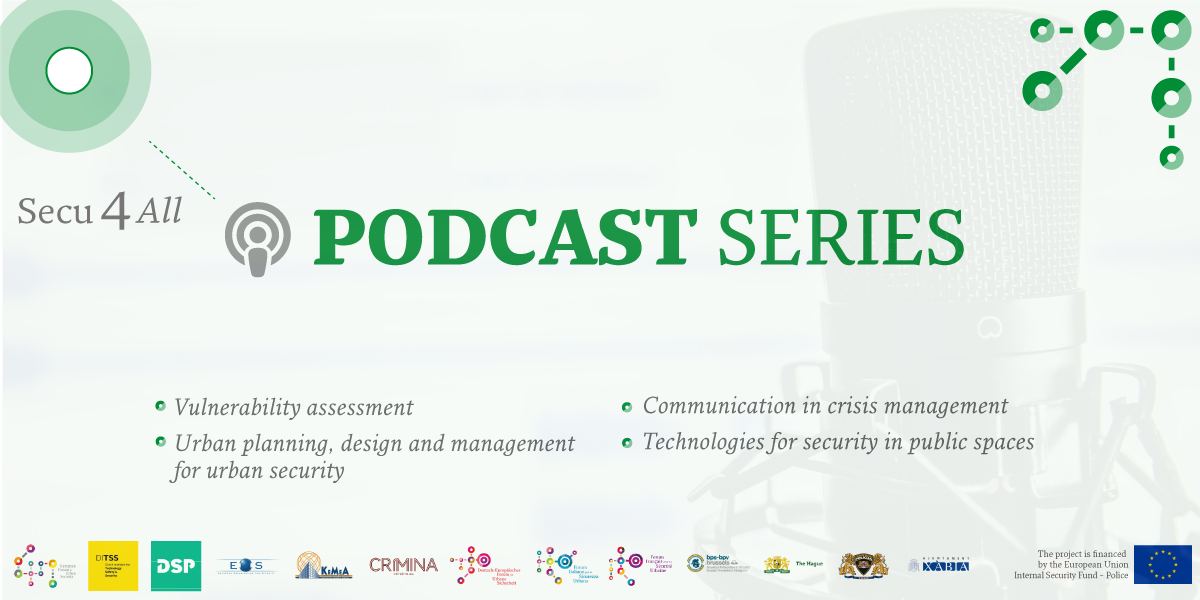This podcast series explores the current risks and threats affecting European cities’ public spaces and how to address and mitigate them. Following a short introduction, the podcast discusses: vulnerability assessment – urban planning, design and management for urban security – communication in crisis management – technologies for security in public spaces.
Public spaces in urban security
Public spaces in cities are dense and rich places of exchange, culture, commerce and leisure. Because they are highly frequented and have an open nature, they can be subject to a number of threats. The link between public spaces and security has been central to Efus’ work since the organisation’s creation in 1987. In its Security, Democracy and Cities Manifesto, Efus advocates that ‘the design and management of public spaces have an impact on security and feelings of insecurity’.

The Secu4All project aims to empower local and regional authorities with theoretical knowledge and practical tools to ensure the security of public spaces and the protection of soft targets against potential threats.
Specific training programmes have been developed in four areas:
- Vulnerability assessment
- Urban planning, design and management for urban security (UPDM-US)
- Crisis management communication
- Technologies for security in public spaces
Through this training, we aim to foster the exchange of promising practices, innovative learning methodologies and real-life exercises, help detect shortcomings, and ensure the capacity of local authorities to respond in a timely and adequate way in cases of incidents threatening the public space.
Podcast 1 | Vulnerability assessment
In the first podcast, we discuss the connection between vulnerability and public spaces from an urban security perspective with Vivian Gravenberch from the Dutch Institute for Technology, Safety & Security (DITSS).
Indeed, before being able to ensure the security of public spaces, we need to know what and where the vulnerabilities are, by carrying out a vulnerability assessment.
How do we define vulnerability, and how can we identify and assess it? Who should take the decisions based on the assessment? How do we increase the resilience of public spaces? What about the feeling of insecurity?
Resources
- PRoTECT project:
- EU Quick Guide to support the protection of Places of Worship (May 2021)
- Safer Space for Safer Cities
- JRC Science for Policy Report Review on Soft target/Public space protection guidance
- CITY-WIDE PUBLIC SPACE ASSESSMENT TOOLKIT A guide to community-led digital inventory and assessment of public spaces
Podcast 2 | Urban planning, design and management for urban security
In the second podcast, Paul van Soomeren and Kaya-Malin Franke from DSP-groep, an independent institute for policy research and social innovation, answer questions, such as: How do you define security? Why do people feel insecure in public spaces? What is CPTED (CP-UDP?) And how can this approach reduce perceived insecurity?
Resources
- dsp-groep.eu
- CCI Factsheet on Crime Prevention through Urban Design
- Security by Design: SecureCity – 10 Rules of Thumb Urban Agenda for the EU
- Security by design for the Protection of Public Spaces
- Ethical, legal & social issues impacting Crime prevention through urban design and planning
- Planning Urban Design and Management for Crime Prevention Handbook (EN)
- Urbanisme conception et gestion des espaces pour prévenir la malveillance Manuel (FR)
- Guide to the integration of security systems in public spaces – Brussels-Capital Region
- Better street lighting alone won’t make our cities safer for women
Podcast 3 | Communication in crisis management
In the third podcast, Christina Karafylli from KEMEA, the Hellenic Center for Security Studies answers the following questions: What should a crisis communication team look like? How should a crisis communication team prepare for a crisis? What are the key elements of communication during and after a crisis? How to make sure the communication is consistent, it relies on verified facts, and is coordinated?
Resources:
Podcast 4 | Technologies for security in public spaces
In the fourth podcast, Francisco Javier Castro, Assistant Professor and Researcher at Crimina Research Center for the Study and Prevention of Crime, Maguelone Laval and Giacomo Bianchi, Project Officers at EOS, The European Organisation for Security, will cover questions, such as: Can technology help to make public spaces safer? Which threats can be prevented or detected by technology? What are the main challenges for local authorities when adopting technology to protect their public spaces? How can we deal with the ethical problems that the use of technology can entail? Does technology for more security and safety outweigh privacy rights?
Resources:
> More information on Secu4All

German European Forum for Urban Security
and Lawrence Schätzle.
The information and views set out in this podcast are those of the author(s) and do not necessarily reflect the official opinion of the European Union.




